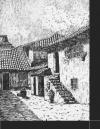Abstract
The Fábrica de Loza Bogotana (a pottery industry founded in Bogotá) research project, carried out during severalyears by an interdisciplinary team, made evident the necessity of identifying and valuing cultural heritage throughmulti-component and relational concepts, rather than through traditional isolated categories such as object/monument/site that still underlie the notion of tangible heritage. The case is used as a reflection on ideas about industrialheritage, and as a means of contrast with the corresponding heritage policies developed in Colombia. Today thisunique example of Colombia’s industrialization process of the 19th Century is at risk. Paradoxically the current conservationpolicies have increased the threats to this pottery industry heritage instead of diminishing them. It is alsostated that determining the different values conferred to this industrial heritage are fundamental when proposinginterventions and construing its significance. CApuntes is registered under a Creative Commons Attribution 4.0 International Public License. Thus, this work may be reproduced, distributed, and publicly shared in digital format, as long as the names of the authors and Pontificia Universidad Javeriana are acknowledged. Others are allowed to quote, adapt, transform, auto-archive, republish, and create based on this material, for any purpose (even commercial ones), provided the authorship is duly acknowledged, a link to the original work is provided, and it is specified if changes have been made. Pontificia Universidad Javeriana does not hold the rights of published works and the authors are solely responsible for the contents of their works; they keep the moral, intellectual, privacy, and publicity rights.
Approving the intervention of the work (review, copy-editing, translation, layout) and the following outreach, are granted through an use license and not through an assignment of rights. This means the journal and Pontificia Universidad Javeriana cannot be held responsible for any ethical malpractice by the authors. As a consequence of the protection granted by the use license, the journal is not required to publish recantations or modify information already published, unless the errata stems from the editorial management process. Publishing contents in this journal does not generate royalties for contributors.


